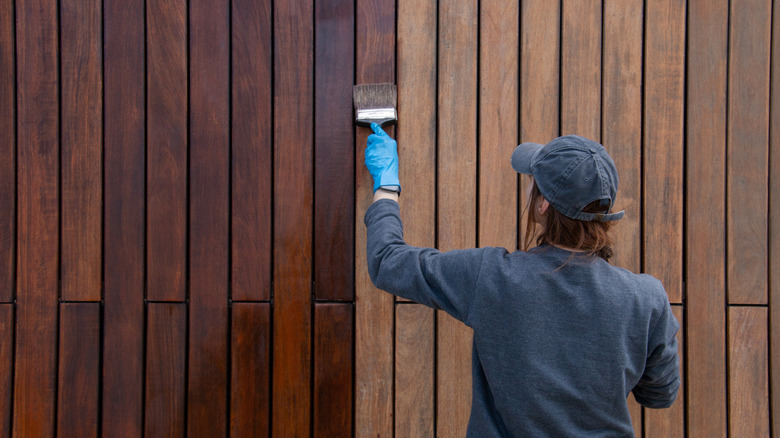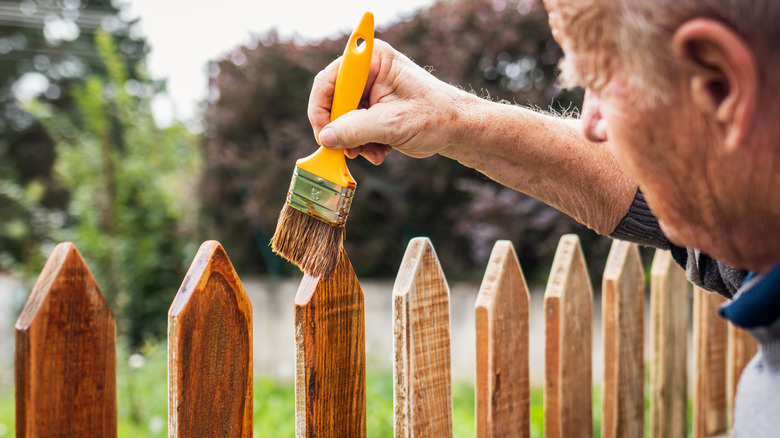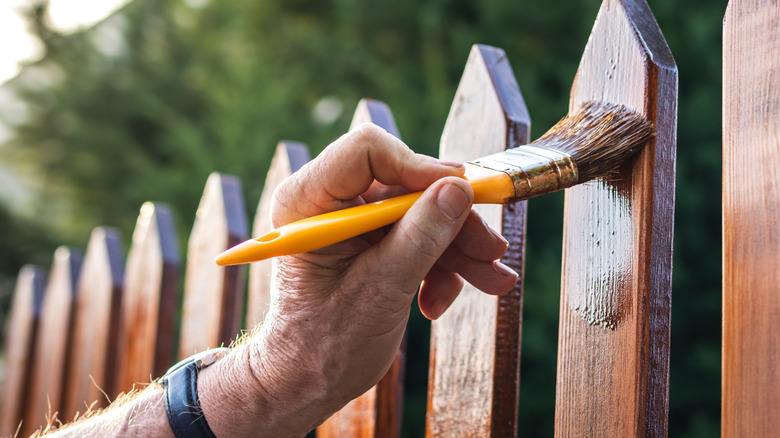How To Determine The Best Type Of Stain For Your Wood Fence
Finding just the right wood fence ideas can generate style and privacy for your yard. You might spend a lot of time picking the right wood, designing the perfect look, and installing the fence. Don't stop there, though. You want to make sure that you protect your investment and hard work from the weather by following the best tips for staining your wood fence. Using a stain can provide protection against UV rays, mold, and mildew, and it also blocks moisture from penetrating the wood, ensuring it doesn't warp, rot, or crack in harsh weather.
Before you start staining, though, you need to decide which is the best material to use. Rather than just grabbing any type of stain off the shelf at the hardware store, you should select the best type to match the wood you used when building the fence. You have two primary choices to make when selecting stain — the color (or no color) and the configuration (water- or oil-based) — although some of these options work better with certain types of wood. Learn more about how to figure out which stain to use with your wood fence.
Match the type of wood you're using with the type of stain
You can use either oil- or water-based stain on a wood fence. An oil-based stain features both transparent options and solid color tints. It provides better protection against weather. A water-based stain always has some sort of color tint, although the color can be light when it's semi-transparent. It does a better job of resisting mold and mildew than oil.
Pine is a common type of wood for fences, including pressure-treated pine, and water-based stains are usually best for this type. As a soft type of wood, pine tends to absorb oil-based stain quickly and unevenly, which can lead to blotchy results. Because a water-based stain sits on top of the wood longer, rather than being absorbed, it can help create a more even finish on the pine.
Cedar is another popular type of wood to use for a fence. Although some people report having moderate success with using water-based stains on cedar, it is an oily type of wood with large pores, meaning an oil-based stain tends to work better with cedar. The oil-based stain protects the cedar from the elements, while a water-based stain could cause the wood to swell. Redwood, which is another popular fencing material, has similar success with oil-based stains as cedar does.
How to choose the right color of stain – if any – for your wood fence
Choosing the best stain for your wood fence also involves selecting color and transparency levels. Deciding between transparent and semi-transparent stains for a wood fence is a good starting point. The transparency level determines how much of the wood grain shows through. Transparent products have no color, semi-transparent shows some grain and some color, and solid stains block most of the wood grain with a solid color.
If you're using pressure-treated pine for your wood fence, it naturally has a greenish tint to it because of the chemicals used on it. Colored stain will darken the wood and hide the greenish tint. Understand that stain colors often dry darker than expected with pressure-treated pine. If you use untreated pine, it has multiple knots and a natural grain that is pleasing to look at, so you could use a transparent stain or a light-colored semi-transparent option if desired. A warm brown stain works nicely for untreated pine because it doesn't dry quite as dark as it can with other types of wood.
For a redwood or cedar fence, a semi-transparent wood stain works well, allowing the beauty of the wood to show through. Neutral colors in the semi-transparent stain are preferrable. Some people select a transparent stain for redwood and cedar, allowing the natural grain to be easily visible without having covering from a color tint.


